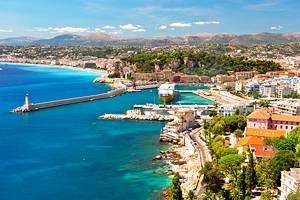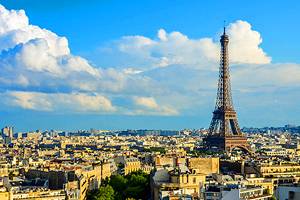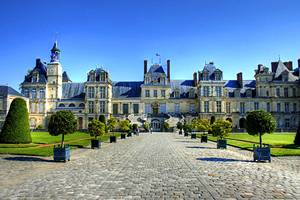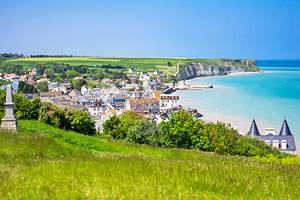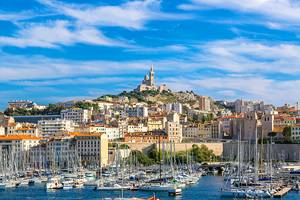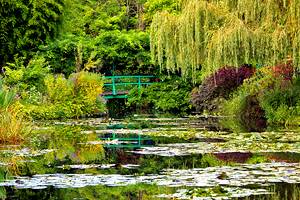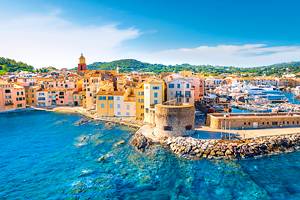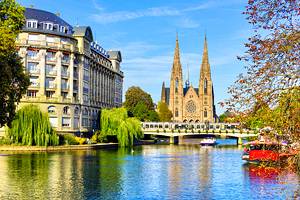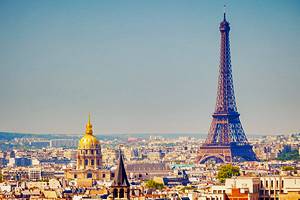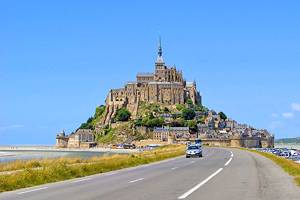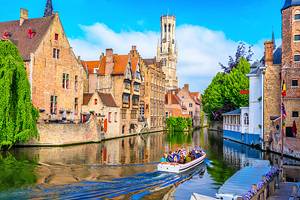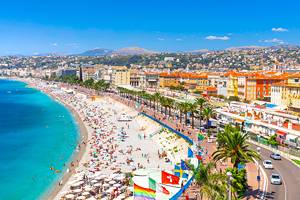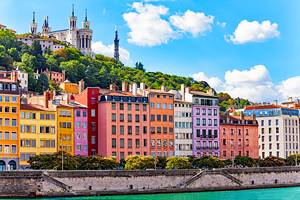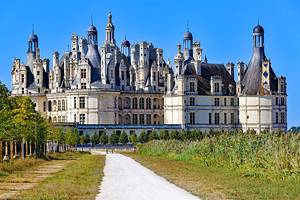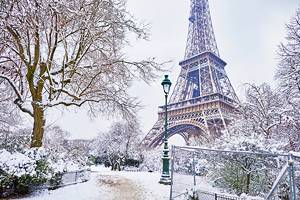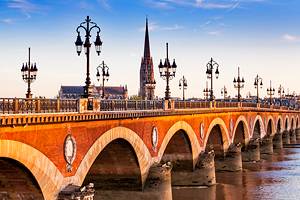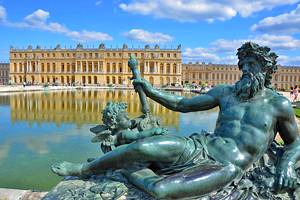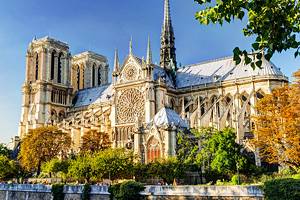3-Day Paris Itinerary for Travelers
Visiting Paris in just three days can be an exhilarating whirlwind. However, you can only begin to discover the city in such a short time. French novelist Honoré de Balzac proclaimed that "Paris is an ocean. You may explore it, but you will never know its depths." One glimpse at a detailed 200-page Plan de Paris (map of the city), and that statement makes even more sense.
The City of Light boasts an astounding number of cultural attractions: over 150 museums, dozens of historic churches, and 20 distinct neighborhoods called "arrondissements." Besides the famous landmarks, Paris is full of hidden treasures: atmospheric cobblestone streets, elegant tree-lined boulevards, lovely fountain-adorned squares, and exquisite formal gardens that invite visitors to wander aimlessly or linger on park benches.
This itinerary includes the highlights of Paris, listed in an order that avoids walking back and forth. Suggestions are included for restaurants in the areas where you will end up by a mealtime. The itineraries focus on walking (rather than Métro rides), so you can spend more time admiring the sights and less time in unappealing underground train stations.
Tips for Travelers: Check the official museum and monument websites for opening hours before your visit. Many of the museums included on this itinerary are closed on Monday or Tuesday (including the Louvre, which is closed on Tuesdays, and the Musée d'Orsay, which is closed on Mondays). Also keep in mind that Paris museums and monuments are closed on some national and/or religious holidays.
You will also need a Paris Visit pass for the Métro rides. You can get tickets at machines in the Métro stations or at tobacco shops throughout Paris.
On This Page:
Day 1 Paris Itinerary
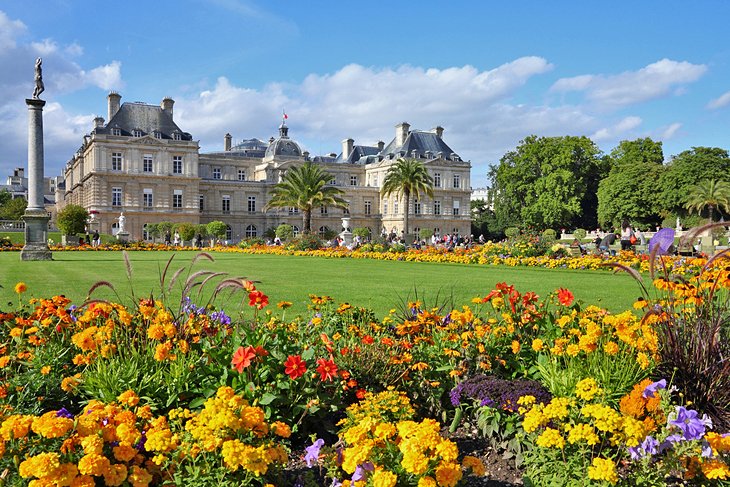
Visit Rue Mouffetard (known as "la Mouffe"), which is the oldest street in Paris. This typical market street gives visitors a taste of Parisian life, thanks to its cafés, restaurants, and specialty food stores like fromageries (cheese shops) and poissonneries (fishmongers). Arrive at 9am, when the street comes to life, and locals begin shopping at the open-air produce stands (at the end of the street by the Place Saint-Médard). On Mondays, the market stalls are closed.
The nearby Place Monge hosts a traditional farmers market (Marché Monge) with around 40 vendors, who sell fresh fruit, vegetables, cheese, meat, fish, and other gourmet products. The market is held on Wednesdays and Fridays from 7am until 2:30pm and on Sundays from 7am until 3pm.
From Rue Mouffetard, walk over to the Panthéon via Rue Descartes and Rue Clovis. Have a look inside this monument devoted to the country's most distinguished citizens. Voltaire, Rousseau, and Victor Hugo are buried here, among other luminaries of France.
You can ascend to the Panthéon's dome (April - October) for sensational views of Paris landmarks including the Eiffel Tower, Notre-Dame Cathedral, and the Louvre.
Next take a stroll through the nearby Jardin du Luxembourg. This 25-hectare green space has two sections: a formal French garden, with tidy rows of flowerbeds and manicured hedges, and a more wild overgrown English garden. The French garden features terraces that are lined with statues and a fountain-adorned decorative pool. Other highlights are the rose garden, heirloom apple orchard, a shady wooded dell, and a restaurant with pleasant outdoor terrace seating.
From the Jardin du Luxembourg, begin your exploration of the 6th arrondissement. Walk from Rue de Médicis to the Place de l'Odéon for a quick look at this handsome square graced by the Théâtre de l'Europe, which dates to 1792 (the Age of Enlightenment).
Then return back towards the Luxembourg Gardens to the Rue de Vaugirard, follow alongside the garden until the Rue Bonaparte (turn right) and continue until you reach the Place Saint-Sulpice, the heart of the 6th arrondissement.
Presiding over the square is the 17th-century Eglise Saint-Sulpice, an impressive church with a simple Neoclassical facade and spacious sanctuary featuring frescos by Eugène Delacroix. Many tourists visit the Saint-Sulpice Church because it was mentioned in Dan Brown's Da Vinci Code novel.
A perfect place to soak up the charm of the 6th arrondissement, the Place Saint-Sulpice is filled with bustling sidewalk cafés and enticing boutiques. A few blocks away is an upscale pastry shop, Maison Mulot (76 Rue de Seine) that offers a selection of French pastries, macarons, and chocolates as well as quiches, sandwiches, and salads.
The Rue Bonaparte is dotted with wonderful pâtisserie shops: Pierre Hermé (72 Rue Bonaparte), which sells delectable macarons and other pastries; À la Mère de Famille (70 Rue Bonaparte), an old-fashioned chocolatier/confectioner founded in 1761; Ladurée (21 Rue Bonaparte), a dainty tea salon and pastry shop renowned for its macarons; and RICHART (27 Rue Bonaparte), which offers chocolate truffles, ice-cream, and macarons. The Rue Bonaparte also has fashion boutiques and home decorating stores.
After exploring the Rue Bonaparte, take a 15-minute walk to another quaint shopping street. Fittingly, the Rue du Cherche-Midi (translates to "Street of the Midday Search") is brimming with interesting little boutiques, cafés, and restaurants. Poilâne bakery (8 Rue du Cherche-Midi) is world-famous for its rustic French country bread.
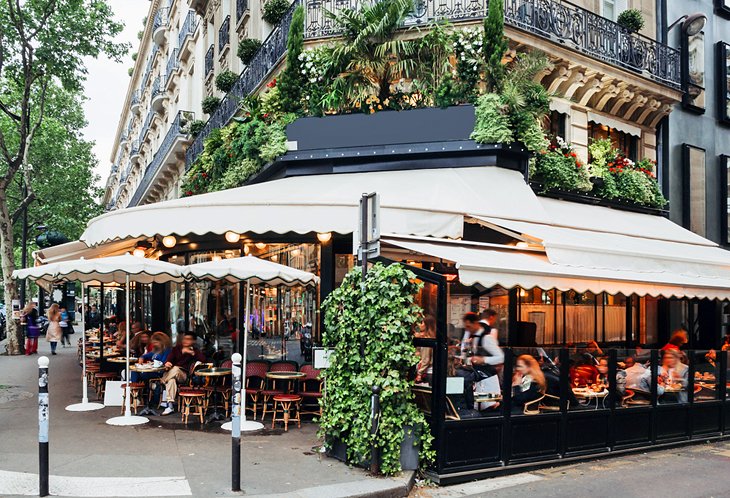
Continue your walking itinerary on the Boulevard Saint-Germain-des-Près, known for its legendary café scene. Jean Paul Sartre and Simone de Beauvoir used to meet at the Café de Flore (172 Boulevard Saint-Germain), while James Joyce, Picasso, and Hemingway hung out at Les Deux Magots. Choose one of these two celebrated cafés for an obligatory Parisian pause-café (coffee-break); install yourself inside or on the sidewalk terrace, where you can watch the world go by.
After your coffee-break, pop into the Eglise Saint-Germain-des-Prés, the oldest church in Paris. This ancient monument has Merovingian-era foundations dating to the 6th century and a marvelous 10th-century Romanesque nave featuring intricately adorned columns.
Keep rambling along the Boulevard Saint-Germain-des-Près until you reach the Boulevard Saint-Michel. Along the way, pastry lovers and chocoholics might be enticed to stop at the Café Pierre Hermé (126 Boulevard Saint-Germain) to sample the macarons, or the Patrick Roger artisanal chocolate boutique (108 Boulevard Saint-Germain), which ranks among the finest Parisian chocolatiers.
Turn right onto Boulevard Saint-Michel and then left onto the Rue du Sommerard to find the Musée de Cluny (the National Museum of the Middle Ages). This prestigious museum in the Latin Quarter displays a collection of medieval art, including the famous Lady with the Unicorn (Dame à la Licorne) tapestry series. The Cluny Museum is currently closed for renovations until 2022.
After visiting the Cluny Museum, spend some time getting lost in the meandering streets of the Latin Quarter. The ancient streets are full of historic character with hidden surprises like quiet squares and unique shops.
Near the Cluny Museum, the Square Paul-Painlevé is a charming tree-shaded spot. A short walk from the square, the Eglise Saint-Séverin-Saint-Nicolas has an awe-inspiring vaulted Gothic interior adorned with brilliant 14th-century stained-glass windows.
Literary types will enjoy browsing the Shakespeare & Company bookshop (37 Rue de la Bûcherie). This fixture of Bohemian Paris also hosts book readings and has a sidewalk café.
The Rue de la Huchette is an atmospheric street full of shops and restaurants. From the Rue de la Huchette, you can find the Rue du Chat-qui-Pêche (Street of the Cat who Fishes), the narrowest thoroughfare in Paris. This cobblestone pedestrian alleyway only allows a sliver of daylight in through the tightly packed ancient buildings.
Next discover an exquisite 13th-century church, Sainte-Chapelle (8 Boulevard du Palais) on the Île de la Cité, an island in the Seine River. To arrive here, return to Boulevard Saint-Michel and head in the direction of the Seine River and cross the Pont Saint-Michel (bridge). Sainte-Chapelle is located in the Palais de la Cité. To find the chapel, enter the iron gate of the Palais de Justice and walk through the inner courtyard. The chapel is renowned for its stained-glass windows and classical music concerts.
After visiting Sainte-Chapelle, walk over to the Pont Neuf. Although the name of this old stone bridge translates to "New Bridge," it is actually the oldest existing bridge in Paris. Built in 1578, the Pont Neuf features an equestrian statue of King Henry IV and "mascarons" (grimacing faces) on the cornices, which you can see better from a river boat. Two spans of the twelve-arched bridge connect the Ile de la Cité to the Left Bank (the area of Boulevard Saint-Germain-des-Prés) and the Right Bank (where the Musée du Louvre and Palais-Royal are located).
Reverse directions to cover the rest of the Île de la Cité by walking from the Pont Neuf along the Quai des Orfèvres and the Quai du Marché Neuf. The Île de la Cité is the heart of Paris, where the city of "Lutetia" was settled by the Romans.
At the heart of the Île de la Cité is the majestic Cathédrale Notre-Dame de Paris. The cathedral was damaged during a fire in April of 2019 and is currently closed to the public. Although you cannot visit the interior of Notre-Dame Cathedral, you can still admire its remarkable Gothic facade from afar. The best views of the Notre-Dame's front is from the Petit Pont pedestrian bridge.
Traverse the Île de la Cité (about a 15-minute walk) until you reach the Pont Saint-Louis. Cross the short Pont Saint-Louis while admiring the views of the Seine River. Street musicians often perform here, adding to the magical ambience.
The Pont Saint-Louis leads to the Île Saint-Louis. This tiny island is distinguished by its quiet pedestrian streets and beautiful 17th-century hôtels particuliers (townhouses). The main drag, Rue Saint-Louis en l'Île, is packed with cute boutiques and restaurants. A favorite tourist spot on the Île Saint-Louis is the Maison Berthillon (29-31 rue Saint-Louis en l'Île) ice-cream shop.
Cross the graceful Pont Marie (an arched 17th-century bridge), make a right on Quai des Célestins and take Rue Saint-Paul to reach Le Marais. This well-preserved medieval quarter is a delightful maze of narrow cobblestone streets. Marvelous discoveries await at every turn, such as ancient palaces, superb museums, quaint cafés, and trendy boutiques.
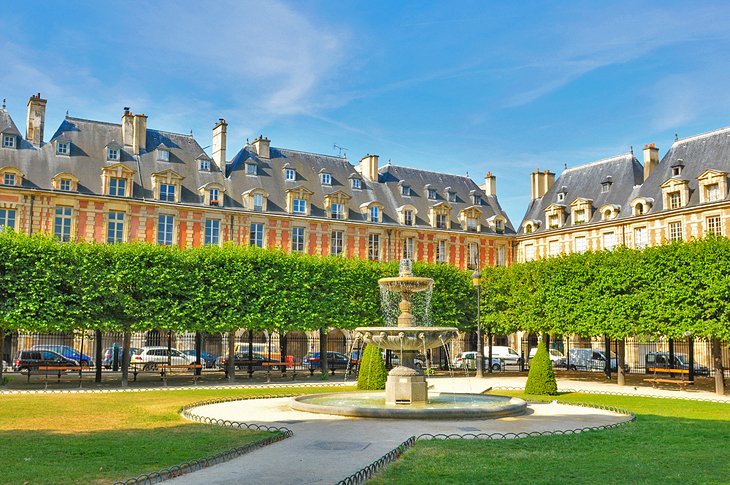
Your first stop in the Marais should be the Place des Vosges, one of the prettiest public spaces in Paris. Enclosed by Renaissance-era aristocratic townhouses, the tree-lined square features delicately flowing fountains. Take a seat on one of the park benches to relax for a moment.
The Place des Vosges is located near the main shopping street of the Marais, the Rue des Francs-Bourgeois. This atmospheric street is packed with fancy boutiques that sell the latest women's fashions, jewelry, accessories, and perfume. A bonus for tourists is that the stores are open on Sundays.
The Marais quarter is home to a Jewish community. The Musée d'Art et d'Histoire du Judaïsme (71 Rue du Temple) educates visitors about Jewish culture in Europe. The museum also displays works by Chagall and Modigliani (both were Jewish artists who lived in Paris).
Modern art lovers will want to visit the Musée Picasso (5 rue de Thorigny), which displays the artists' paintings in a grandiose aristocratic palace. This outstanding collection spans Picasso's career and is rare in that it includes sculptures and etchings.
If you have extra time, visit the Centre Pompidou (the National Museum of Modern Art), which has the best collection of modern and contemporary art in Paris. Highlights include pieces by Matisse, Picasso, Salvador Dalí, Mark Rothko, and Andy Warhol.
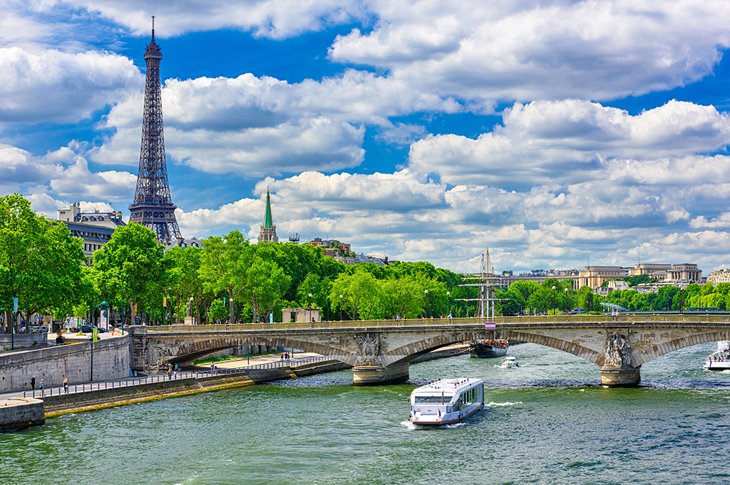
After exploring the Marais, head back toward the Seine River to the Quai de l'Hôtel de Ville, where you can catch the Batobus for a Seine River boat ride to the Eiffel Tower. To find the Batobus from the Place de l'Hôtel de Ville, you have to take the underpass that leads the Quai de l'Hôtel de Ville and then walk alongside the Seine River for about 100 meters until you reach 34 Voie Georges Pompidou, the departure point for the Batobus.
This boat cruise takes about 40 minutes to arrive at the Eiffel Tower stop, and the glorious scenery is worth it.
For many tourists, visiting the Eiffel Tower is the highlight of their sightseeing itinerary. The symbol of Paris, the Eiffel Tower is the most-visited monument in the world. Every year, almost seven million tourists flock to this iconic monument.
To avoid the crowds and make the most of your time at the Eiffel Tower, take a priority-access tour. You'll skip the lines and head straight to the second level, to marvel at the vistas while your guide provides commentary. With your guide, you'll ascend to the second floor of the tower.
After the guided portion of the tour, you can go to the top level of the tower on your own. At this dizzying altitude, the viewing area and platform provide breathtaking panoramas of the Paris cityscape and beyond.
Getting Around: For this itinerary, you will use the Métro and the Batobus Seine River shuttle service. Purchase your Métro pass and Batobus ticket in advance. Batobus tickets are sold at the Paris Tourism Office ticket office wtihin the Hôtel de Ville at 29 Rue de Rivoli.
Where to Eat: Near the Jardin du Luxembourg, try the Mademoiselle Angelina tearoom (19 Rue de Vaugirard) within the Musée du Luxembourg. This casual outlet of the Rue de Rivoli establishment serves brunch and lunch options, such as sandwiches, salads, and quiche, as well as pastries and hot chocolate. Also near the Jardin du Luxembourg, bread&roses (62 Rue Madame) is an organic bakery that offers classic French dishes for lunch in a bright, modern dining room.
For lunch on the Rue du Cherche-Midi, the top choices are Comptoir Poilâne (8 Rue du Cherche-Midi) for quick but delicious meals of tartines (open-face sandwiches); Joséphine Chez Dumonet (117 Rue du Cherche-Midi), a traditional French bistro; Le Cherche Midi (22 Rue du Cherche-Midi), an Italian bistro that makes its own pasta and focaccia bread; Anima (78 Rue du Cherche-Midi), which specializes in authentic Neopolitan-style pizza; and La Cantine du Troquet (79 Rue du Cherche-Midi), which serves classic French dishes and Basque specialties.
The restaurants on Rue du Cherche-Midi are open for lunch from 12pm until 2:30pm or 3pm. To stay on track for this itinerary, arrive at noon for an early lunch. Keep in mind that some restaurants are closed on weekends or Sundays and Mondays (check hours ahead of time).
For a traditional French lunch on the Boulevard Saint-Germain, try Brasserie Lipp (across the street from the Café de Flore). Tuxedo-clad waiters deliver the meals in a handsome 19th-century dining room with white tablecloths.
If you're in the 4th or 5th arrondissement around lunchtime, a wonderful option is dining at a peniche (docked riverboat restaurant) on the Seine. The Péniche Marcounet (at the foot of the Pont Marie) hosts concerts and Sunday brunch with musical entertainment. In the Latin Quarter (5th arrondissement) overlooking Notre-Dame, La Nouvelle Seine (3 Quai de Montebello) serves contemporary French cuisine and international specialties for lunch (Wednesday - Sunday), for dinner (Tuesday - Sunday) and for Sunday brunch.
For lunch in the Marais quarter: the Mariage Frères restaurant & salon de thé (30 rue du Bourg-Tibourg) offers gourmet meals and afternoon tea in an elegant dining room. The most popular spot in the Marais is L'As du Fallafel (34 Rue des Rosiers), which draws crowds for the authentic falafel sandwiches. Be prepared to wait in line, as the restaurant does not take reservations.
Plan to have dinner at the Eiffel Tower (Le Jules Verne is a Michelin-starred gastronomic restaurant on the second level) or in the chic 7th arrondissement, which has many superb restaurants.
For those who would prefer to dine with Seine River views, Ducasse sur Seine offers a two-hour dinner cruise (departing from Port Debilly). This choice would make more sense if you skipped the Batobus cruise earlier.
Within easy walking distance of the Eiffel Tower are several recommended restaurants, including Les Ombres restaurant (27 Quai Branly) on a rooftop garden terrace at the Musée du Quai Branly overlooking the Eiffel Tower; L'Ami Jean (27 Rue Malar), an old-fashioned restaurant that specializes in classic French cuisine; La Fontaine de Mars (129 Rue Saint-Dominique), a traditional French bistro; and Le Violon d'Ingres (135 Rue Saint-Dominique), a Michelin-starred fine-dining restaurant.
Alternatively, you could choose from the wide selection of top-notch hotels near the Eiffel Tower and reverse the order of the itinerary.
Day 2 Paris Itinerary
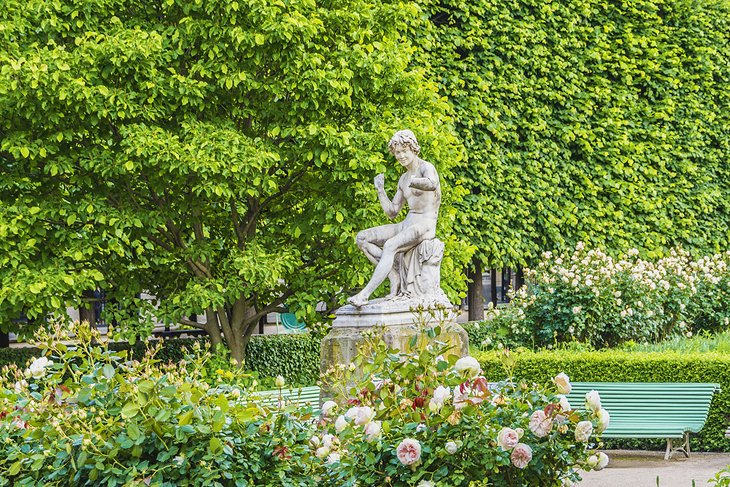
Things to Do: Begin today's tour at the Jardin du Palais-Royal (8 rue Montpensier) in the 1st arrondissement (the very center of the city). To arrive here by Metro, exit at the Palais-Royal Musée du Louvre station.
Enclosed by a group of neoclassical 18th-century townhouses (the Palais-Royal), this delightful fountain-adorned garden gives you a taste of Parisian elegance. The Palais-Royal comprises three wings of galleries overlooking the courtyard garden (Galerie de Montpensier, Galerie de Beaujolais, Galerie de Valois) within the townhouses' arcades, which contain shops, cafés, and a prestigious gastronomic restaurant, Le Grand Véfour known for its exquisite Art Décoratif dining room.
The arcaded galleries of the Palais-Royal also house high-end clothing stores, jewelry boutiques, and shops that sell the finest designer shoes, gloves, watches, handbags, cosmetics, and perfume.
Several cultural attractions are found within the Domaine National du Palais-Royal, the square that includes the courtyard garden and galleries. In one corner of the square is the Théâtre du Palais-Royal, a lavish theater that dates to 1783, and at the other end of the square is La Comédie Française, which opened in 1790 and has been presenting dramatic performances since the Age of Enlightenment.
When visiting the Jardin du Palais-Royal, many tourists are fascinated by the Colonnes de Buren, a contemporary art installation by Daniel Buren that features an assortment of striped columns. This art installation is found in a small courtyard within the larger Jardin du Palais-Royal square (next to the Galerie du Jardin at the southern end of the garden) and is a popular spot for photo-ops.
From the Jardin du Palais-Royal, it's a five-minute walk (via Rue de Valois) to the Musée du Louvre. Turn right on the Rue de Rivoli and enter at the Carrousel du Louvre to avoid the long tourist lines at the Pyramid entrance.
The Musée du Louvre is the most remarkable of Paris' museums, as well as one of the world's finest art collections. Formerly a royal palace, the magnificent exhibition space displays over 30,000 works, including many masterpieces.
It is impossible to see the entire collection in one day, but you can cover the highlights of the Louvre in a few hours. Not to be missed are the Mona Lisa, Paolo Veronese's 70-square-meter Les Noces de Cana painting, the Venus de Milo statue dating to the 1st-century B.C., Le Sacre de Napoléon by Jacques Louis David, La Liberté Guidant le Peuple by Delacroix, and the monumental Victoire de Samothrace sculpture.
To make sure you see the museum's most important works, join a guided skip-the-line Louvre Museum tour, which allows you to skip the admission line and includes commentary from a knowledgable guide. This guided tour is typically three hours long. You may need to skip other museum visits on the itinerary if you choose to take this tour.
The next stop is Paris' second most-visited museum, the Musée d'Orsay. When you've completed your Louvre visit, walk through the Cour Napoléon (courtyard) to the Place du Carrousel. You'll see the Arc de Triomphe du Carrousel. Turn left and walk until reaching the Quai François Mitterrand, then cross the Seine River at the Passerelle Léopold-Sédar-Senghor to reach the Musée d'Orsay.
A veritable temple of Impressionism, the Musée d'Orsay houses its fabulous collection within a repurposed Belle Epoque railway station. Some of Monet's finest works are on display here along with masterpieces by Renoir, Degas, and other Impressionist artists. The collection also includes post-Impressionist works and evocative pieces by Toulouse Lautrec.
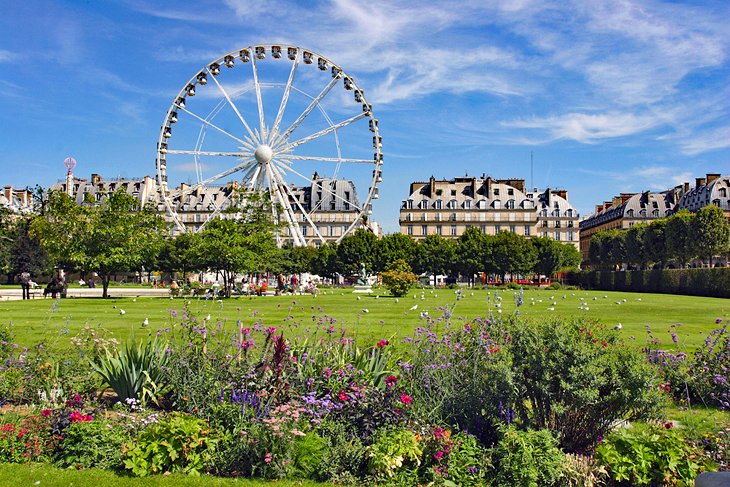
From the Musée d'Orsay, retrace your steps across the Seine River and return to the Jardin des Tuileries. This perfectly manicured formal French garden was created by the esteemed landscape designer André Le Nôtre in the 17th century. Stroll along the tree-lined paths while admiring the fountains and statues. The garden has several casual café-restaurants with outdoor terrace seating.
In a leafy corner of the Jardin des Tuileries (heading in the direction of the Place de la Concord), you'll find the Musée de l'Orangerie renowned for its assortment of Monet's Water Lilies (Nymphéas) paintings. Also on display are noteworthy Impressionist paintings by Auguste Renoir and Alfred Sisley, post-Impressionists works by Henri Matisse, and modernist pieces by Picasso and Modigliani.
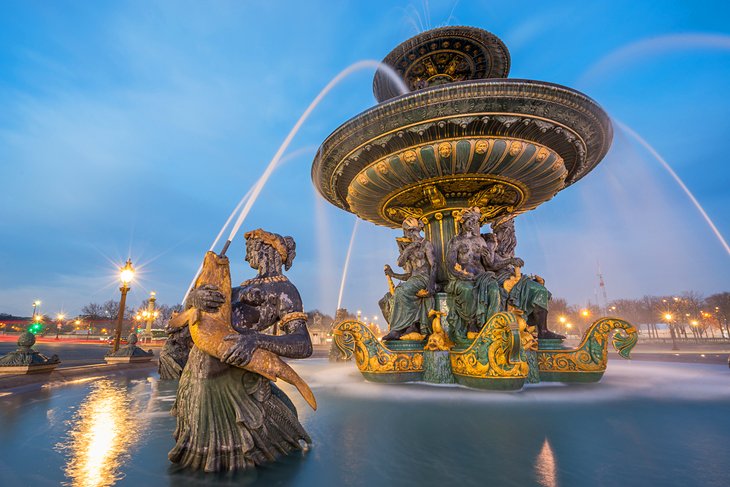
After visiting the Musée de l'Orangerie, head towards the busy Place de la Concorde. This expansive square reflects the elegance of 18th-century urban planning. Developed by the architect of King Louis XV, the square sets the stage for the Arc de Triomphe at the end of the Champs-Élysées. Be careful as you walk around the square, watching out for hasty Parisian drivers who may not be paying attention to pedestrians.
Continuing from the Place de la Concorde, stroll through the Jardins des Champs-Élysées. This luxuriant park features plenty of surprises, including statues, fountains, three museums, and two restaurants. Take a seat on a park bench for a moment and soak up the natural beauty. The Petit Palais - Musée des Beaux-Arts (Museum of Fine Arts) displays an exceptional collection of European paintings (by Delacroix, Rembrandt, Rubens, among others) and Impressionist art (by Monet, Morisot, Pissarro, Renoir, Sisley).
The itinerary follows along the Avenue des Champs-Elysées, the most iconic street in Paris and certainly among the most beautiful avenues in the world. Long before it was a chi-chi address, the Champs-Elysées was a desolate marshland ("champs" translates to "fields") until it was landscaped by André Le Nôtre in the 17th century and then redesigned by the Parisian city planner Baron Haussman in the 18th century.
Amble down this grand tree-lined boulevard, while stopping to browse the designer boutiques such as Louis Vuitton and Guerlain. The Champs-Elysées is also renowned for its upscale dining establishments and the refined establishment at 75 Avenue des Champs-Elysées, Ladurée salon de thé (tea salon), which would be a good place to stop for a snack or afternoon tea or just to pick up some French pastries to go. Ladurée is famous for its macarons (filled almond cookies).
A little farther down the avenue closer to the Arc de Triomphe is the Pierre Hermé boutique (133 Avenue des Champs-Elysées), which is another venue known for its macarons. Pastry chef Pierre Hermé began his career at Ladurée before he opened his own boutiques.
The Avenue des Champs-Elysées extends for two kilometers until ending at the Arc de Triomphe. Although you could take the Métro from the Place de la Concorde to reach the Arc de Triomphe in a few minutes, it is worth taking the walk to appreciate the beauty of the Champs-Elysées and to admire the storefronts. (If you take the above-mentioned two-hour guided tour of the Musée d'Orsay, you may need to opt for the Métro to save time.)
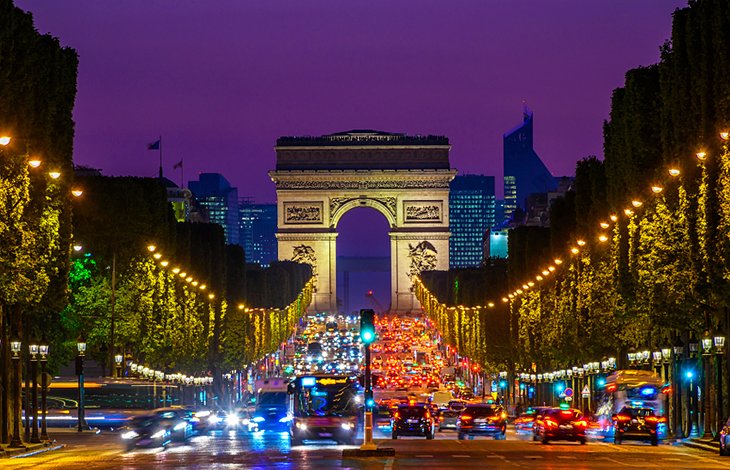
An emblematic military memorial monument, the Arc de Triomphe was commissioned by Napoleon in 1806 to honor the soldiers who fought during the French Revolution and the Napoleonic Wars. This impressive 50-meter-high monument was modeled after the Arch of Titus in Rome.
At the top of the monument (accessible by 284 steps or an elevator ride), the viewing platform affords sensational panoramas of the 12 avenues radiating from the Place de l'Étoile, as well as the cityscape beyond.
To experience Parisian joie de vivre, have dinner at one of the legendary establishments on the Avenue de Champs-Elysées or choose another famous restaurant in the area.
Getting Around: This is mainly a pedestrian itinerary. However, if you want to visit the museums in a leisurely manner and feel that the long walks will make you too rushed, then take a Métro ride from the Place de la Concorde to the Arc de Triomphe. This will save about 45 minutes of time that it would take to walk between the two points.
Where to Eat: Frequented by fashionable Parisians, Le Café Marly is a secret spot tucked away within the arcades of the Louvre's Richelieu wing. This sophisticated dining establishment combines the elegance of a high-end brasserie with the panache of a literary café. Uninterrupted meal service, including breakfast, lunch, dinner, and afternoon tea, is available from 8:30am until 11:30pm. The restaurant's interior is sleek yet cozy, while the outdoor dining terrace overlooks the Louvre pyramid.
Within the Musée d'Orsay building, Le Restaurant occupies a dazzling Belle Époque dining room (listed as a Historical Monument) and serves affordable gourmet meals (especially the prix-fixe option). The Musée d'Orsay also has a casual café that serves salads and sandwiches for lunch, as well as desserts, ice cream, coffee, and hot tea in the afternoon.
For lunch in the Jardin des Tuileries, the casual Rosa Bonheur la Crêperie (indoor and outdoor terrace seating) specializes in crêpes prepared from seasonal ingredients. Also in the Tuileries Garden are the Pavillon des Tuileries, a laid-back restaurant with a peaceful shaded terrace and dining space overlooking the garden's manicured trees, and the Café des Marronniers, a café-restaurant with tables beneath the chestnut trees.
For a special treat, go to Angelina (226 Rue de Rivoli) next to the Jardin des Tuileries. Angelina serves lunch, as well as fancy French pastries and its famous hot chocolate in a Belle Epoque dining room adorned with Art Déco murals and gilded details.
The Jardins des Champs-Élysées also has three gourmet dining options. The Michelin-starred Pavyllon on the ground floor of the Pavillon Ledoyen specializes in fusion cuisine. On sunny days, guests may dine on the open-air terrace overlooking the gardens. L'Abysse, a Japanese sushi restaurant has two Michelin stars; and Alléno Paris, a modern gastronomic restaurant, boasts three Michelin stars and a dining room featuring decor classified as a Historic Monument.
Worthy of a splurge, Laurent is hidden in a tranquil corner of the Jardins des Champs-Élysées. This Michelin-starred restaurant delights diners with its creative haute-cuisine prepared from seasonal ingredients. Meals are served in a gorgeous Neoclassical dining room or on the enchanting outdoor terrace next to the garden's fountain.
Right on the Champs-Élysées, the legendary Fouquet's Paris (99 Avenue des Champs-Élysées) delivers a refined dining experience. This brasserie opened in 1899 and still excels at creating classic French cuisine. The Michelin-starred L'Atelier Etoile de Joël Robuchon (133 Avenue des Champs-Élysées) appeals to gourmands who appreciate the art of haute-cuisine (you can watch the chefs prepare the dishes).
A short walk from the Champs-Élysées are a couple of top restaurants: Penati al Baretto (9 Rue Balzac) is a Michelin-starred restaurant that specializes in contemporary Italian cuisine, and the Restaurant Pierre Gagnaire (6 Rue Balzac) in the Hôtel Balzac is a three-Michelin-starred gastronomic establishment that focuses on modern, seasonal French cuisine.
Day 3 Paris Itinerary
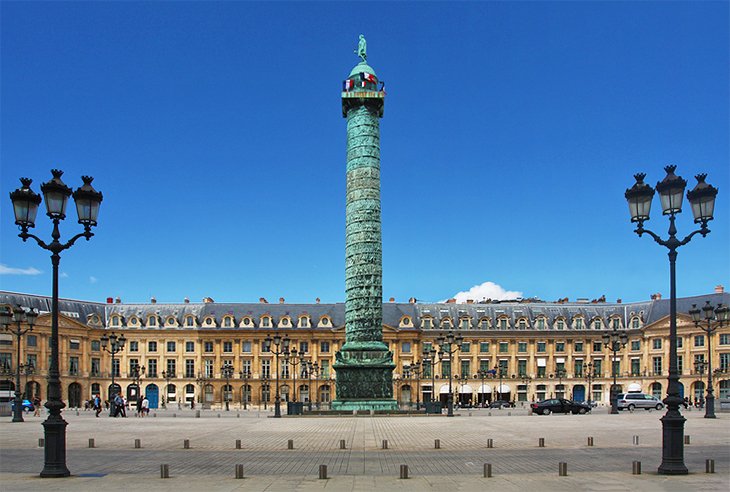
Begin the day's itinerary at the Place Vendôme, an elegant square of the Grand Siècle when Louis XIV (the Sun King) reigned in France. The square is home to the Ritz Paris and deluxe jewelry boutiques such as Cartier and Van Cleef & Arpels.
From the Place Vendôme, it's about a 15-minute walk to the Place de la Madeleine. Here, you can visit the Eglise Sainte-Marie-Madeleine, an impressive Neoclassical church.
The Place de la Madeleine is also renowned for its specialty food boutiques, including Fauchon Paris (11 Place de la Madeleine), a purveyor of luxury tea, pâtisserie, chocolates, and other fine gourmet products; the Mariage Frères tea shop (17 Place de la Madeleine); and the Patrick Roger chocolate boutique (3 Place de la Madeleine). The renowned chocolatier Maison du Chocolat (8 Boulevard de la Madeleine) is just steps away from the Place de la Madeleine.
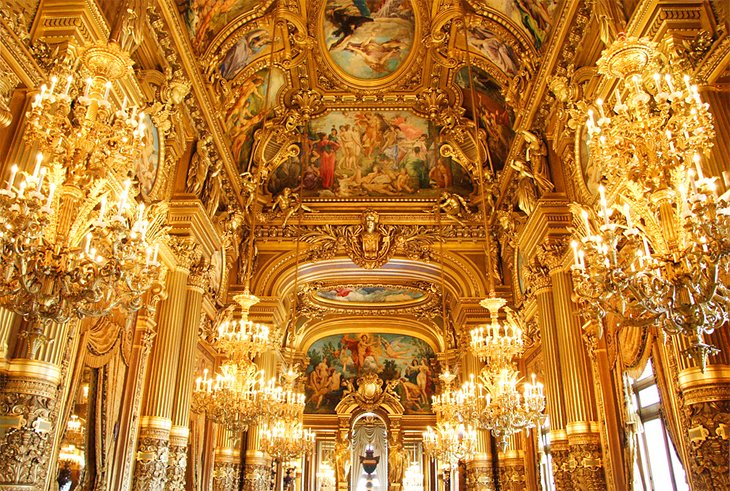
To get a sense of Belle Epoque Paris, take a walk along the Boulevard de la Madeleine and the Boulevard des Capucines. These spacious Grand Boulevards were designed by Baron Haussmann in the 19th century.
Next, visit the Palais Garnier (Opéra National de Paris) an opulent Baroque-style opera house built in 1860. Pay for an admission ticket or take a guided tour so that you can see the extravagant 11,000-square-meter interior with its marble Grand Escalier entrance staircase, glittering chandeliers, and lavish gilded details.
Next, visit Paris' most adorable neighborhood, Montmartre. You'll need to take the Métro from the Opéra station (first take line 8 direction Balard and change at the Madeleine station to line 12 direction Aubervilliers) to Abbesses station in Montmartre. Please note: The exit from the Abbesses station is a long, winding fight of steps, and the hilltop neighborhood of Montmartre has many pedestrian staircases, so you need to be in good shape to explore this area.
When you exit the Abbesses Métro station, you'll arrive at the Place des Abbesses. Take a moment to admire the Art Nouveau entrance to the Abbesses Métro station and then continue to the Passage des Abbesses, a flight of steps that leads up the hill towards Rue Berthe. Taking a right on Rue Berthe, a left on Rue Drevet, another left on Rue Gabrielle, and finally a right on Rue du Calvaire leads up to the Place du Tertre.
Originally a small country village apart from Paris, Montmartre still has a bucolic feel thanks to its tree-lined squares and cobblestone lanes. The neighborhood became a thriving artists' community during the Belle Epoque and early 20th century. The Place du Tertre encapsulates the area's artistic Bohemian character. During the day, this picturesque square fills up with local artists who set up shop to sell their works. At night, the Place du Tertre reveals the sleepy ambience of a provincial town.
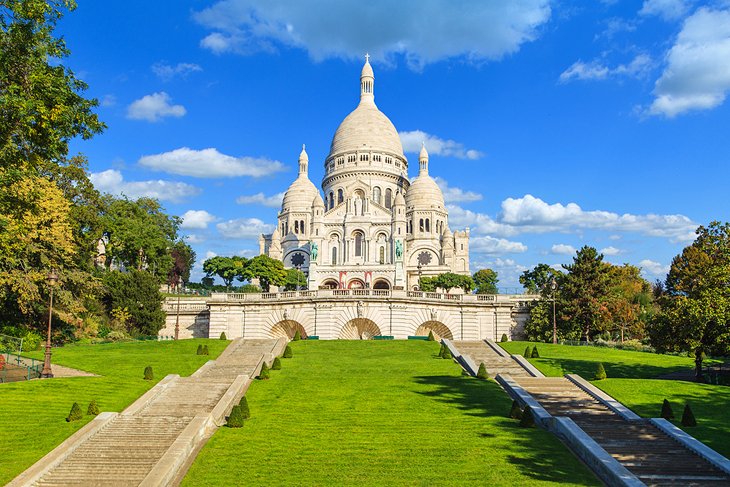
Continue a few blocks up the hill from the Place du Tertre to the Sacré-Coeur Basilica on the highest point of the Butte Montmartre (the "Mont Martyr" hilltop where the martyr Saint Denis was buried). The Basilique du Sacré-Coeur is a somber church devoted to silent prayer.
The atmosphere outside the basilica is quite a contrast, with street musicians performing, tourists posing for photo-ops, and neighborhood residents lounging on the grassy esplanade. The basilica's terrace affords sweeping views of Paris all the way to the Eiffel Tower.
Head back toward the Place du Tertre and take a short detour to the Musée de Montmartre (12 Rue Cortot). This museum brings to life the creativity and Bohemian spirit of Montmartre through its extensive art collection. On display are many works by the celebrated artists of Montmartre such as Modigliani, Vuillard, and Toulouse-Lautrec. The museum also has an idyllic garden where Renoir created two famous paintings; within the garden's conservatory is the Café Renoir with a scenic outdoor patio.
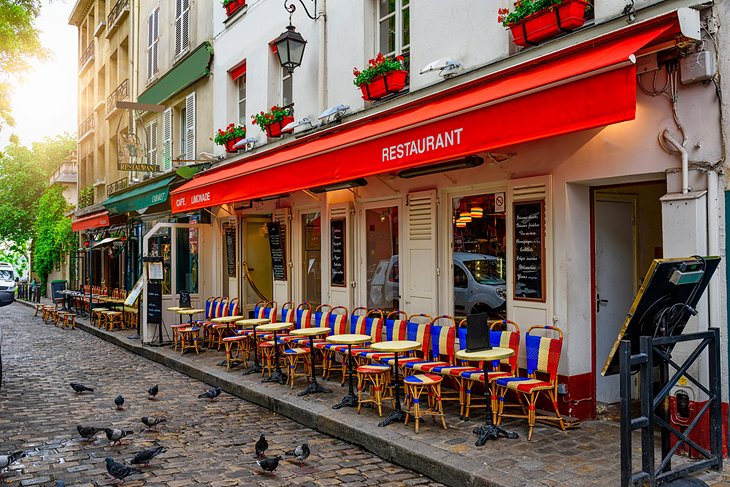
For the perfect grande finale to your sightseeing itinerary, enjoy a leisurely dinner at one of the quaint restaurants in Montmartre. Many restaurants in Montmartre have musical entertainment in the evenings, adding to the quarter's joyous ambience.
Where to Eat: Have lunch in the Place de la Madeleine area or at the Palais Garnier (Opera House). Part of the renowned Fauchon enterprise, Le Grand Café Fauchon (11 Place de la Madeleine) is a trendy restaurant that focuses on seasonal French cuisine, open for lunch, dinner, and Sunday brunch. The Opera House has a chic restaurant, CoCo (1 Place Jacques Rouché), which serves lunch and dinner daily and brunch on the weekends.
For dinner in Montmartre, there are many possibilities. Near the touristic itinerary, Le Coq & Fils (98 Rue Lepic) is a convivial bistro-style neighborhood restaurant that specializes in chicken dishes, open every day for lunch and dinner. Guilo Guilo (8 Rue Garreau) is a casual yet stylish Japanese restaurant in Montmartre near the walking itinerary.
The Bouillon Pigale (22 Boulevard de Clichy) is a favorite neighborhood bistro that serves classic French cuisine at an affordable price; the restaurant is about a five-minute walk from the Place des Abbesses (near the Pigalle station, which you could use to return to your hotel).
More Related Articles on PlanetWare.com
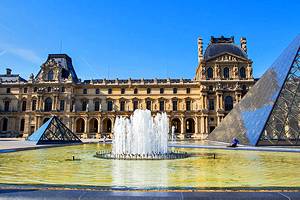
Must-See Sights in Paris: It helps to plan ahead before your visit and read about the top attractions in Paris, so you know where you want to focus your time. Be sure to learn about the outstanding Paris museums and the most noteworthy historic churches found throughout the city.
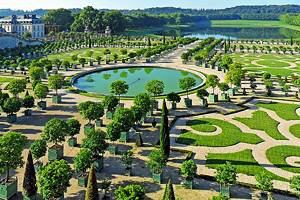
Day Trips from Paris: If you have more time, be sure to visit the Château de Versailles, a UNESCO-listed monument that showcases the glory of 17th- and 18th-century France. This amazing palace was home to Louis XIV (the Sun King), as well as Louis XVI and Marie-Antoinette, the monarchs who fell during the French Revolution. Other essential day trips from Paris include the 13th-century Chartres Cathedral and the Château de Fontainebleau.


